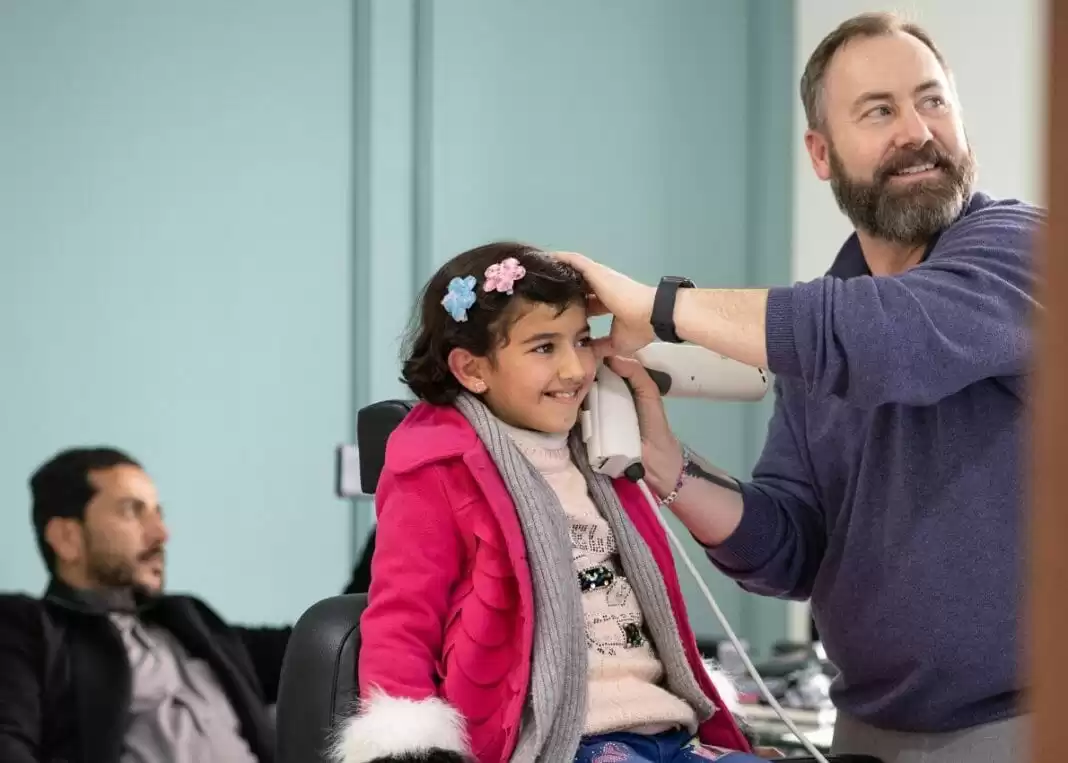Technology is increasingly central to every aspect of human existence. It has the potential to unlock powerful new possibilities, such as helping people hear what they wouldn’t be able to hear on their own.
More than 1.5 billion people worldwide live with hearing loss, and the World Health Organization predicts that by 2050 that number will increase to more than 2.5 billion people.
Technology is integral to helping people with disabilities live independently and participate fully in all aspects of life. Within Intel, there is a movement to improve accessibility for people with hearing loss from multiple angles. Several projects are ongoing at Intel to increase access to assistive devices and improve their integration with other technologies.
Increasing Access to Hearing Aids
Accessibility starts with access, and in much of the world, access to hearing aids is prohibitively expensive.
In collaboration with Intel and Accenture, 3DP4ME is using 3D printing to bring assistive technology to people in developing countries. 3DP4ME, an Intel RISE Technology Initiative partner, is currently piloting its project in Jordan, taking scans of children’s ears and printing custom-fitted hearing aids for them. The application of 3D printing increases access to hearing aids because it is faster and less expensive than traditional manufacturing methods.
“Previous work to provide hearing aids to children included hand-making the custom ear molds. It was a craft that was labor-intensive, and you could only make four or five hearing aids a day,” says Jason Szolomayer, founder of 3DP4ME. “There were long wait times, even after the kids were tested. Using 3D printing allows us to scale up the service we provide to families and kids who need hearing aids.”
The goal is to scale this capability to reach thousands of people in need – and, ultimately, democratize hearing solutions around the globe.
Intel CEO Pat Gelsinger, who uses a hearing aid, is also working to drive awareness of the importance of accessible technology.
Improving Hearing Aid Connectivity to Computers
As people increasingly use computers for work, school and social activities, assistive technology must integrate seamlessly with PCs.
In collaboration with top hearing aid vendors, Intel is working to improve the user experience when connecting hearing aids to laptops. With the help of employees who are hard of hearing, a team in Intel’s Client Computing Group (CCG) is working to use Bluetooth LE Audio to enable a direct connection between “Engineered for Intel® Evo™” verified hearing aids and Intel Evo PCs, and to close the compatibility gap that currently limits people’s ability to use their hearing aids on their computers.
The current experience depends on many factors, including the type of computer and the kind of hearing aid, and requires an intermediary device such as a dongle or dedicated box.
Individuals using hearing aids typically must join meetings on multiple devices, use captions for presentations running on a separate screen and wear a headset in addition to their hearing aid. Intel hopes this collaboration will help improve this process and create a wireless connection between hearing aids and PCs.
Providing a Clearer Audio Experience
Intel’s CCG Accessibility Project includes several initiatives that go beyond solving hearing aid compatibility problems. All Ears is an ambient-aware artificial intelligence platform that acts as a Bluetooth LE hearing aid assistant.
Working in shared or noisy environments can be particularly challenging for people with hearing disabilities. This technology recognizes critical sounds the user cares about and offers a visual notification on their screen for noises that are happening in their environment, such as a knock on the door or a specific person calling their name. This allows the user to focus on what’s happening on their PC while staying connected to relevant ambient sound in the room.
These accessible technology efforts are part of Intel’s long-term commitment to inclusivity. Intel leaders believe assistive technology and accessibility drive innovation and they will continue to work to create world-changing technology to improve the life of every person on the planet.
